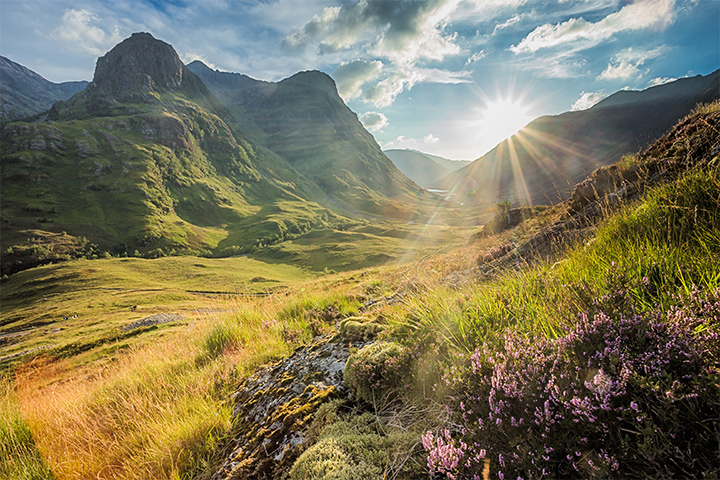Image: iStock
Mountains are tall conical-shaped landforms that stand higher than their surrounding flat terrain in a specific region. Most of these massive natural structures are formed when the tectonic plates located in the Earth’s upper mantle collide and rise higher and higher (1).
Some mountains continue to grow over the years, while others peak at a certain point and gradually weather away over several hundred years. They are found not only on the Earth’s surface but also in the oceans.
Mountains are characterized by their sloping sides, rounded ridges, and peaks. They stand over 600 meters tall and are primarily made up of rocks.
In this post, we tell you about the different types of mountains, how they are formed, and a few fascinating mountain facts for kids so your child can discover and learn everything about this fascinating elevated land.
Formation Of Mountains And Their Different Types
Mountains are identified by their height and shape, but not all mountains are of the same type. They are classified based on their formation process. Read on to learn more about the different types of mountains and how they are formed (2) (3) (4) (5) (6).
1. Fold mountains
When two or more tectonic plates similar in thickness and weight push against each other, they fold and rise higher with each collision. The longer the collision continues, the higher the mountain rises. This process of mountain formation is known as ‘orogeny,’ and such a mountain is called a ‘fold mountain.’ The Himalayas in Asia are mountains formed out of the movement in the Earth’s crust.
2. Fault-block mountains
The movement of large crustal blocks along the faults due to tensional force can push a part of the crust upward or downward. A mountain range formed as a result of this phenomenon is known as a ‘fault-block mountain.’ The part that rises above is known as ‘horst,’ while the part that is pushed below is known as ‘graben.’ The Teton range in Wyoming and the Sierra Nevada in California are examples of a fault-block mountain.
3. Volcanic mountains
These are formed when magma under the Earth’s surface rises out of the volcanic vents and spills on the Earth’s surface. This lava (magma that has erupted) contains ash and dust, and as it accumulates, it rises above the Earth’s surface around it. Layers upon layers of this lava create a conical mountain. Mount Kilimanjaro in Tanzania is an example of a volcanic mountain.
4. Dome mountains
Dome mountains are formed when the molten rocks below push the Earth’s surface upwards without breaking it. This pressure creates a circular shape that rises until the molten rocks cool down and harden. The Black Hills of South Dakota is an example of a dome mountain.
Facts About Mountains For Kids
Mountains are beautiful and fascinating natural landforms. Have a look at some of the most interesting facts about mountains (7) (8) (9) (10) (11).
- The mountain named ‘Olympus Mons’ on the planet Mars is the largest mountain in our solar system. It stands 16 miles (24 kilometers) tall and stretches 340 miles (550 kilometers) long.
- Mount Everest in Nepal and Tibet is the tallest mountain on planet Earth. It reaches a height of 29,029 feet at its peak.
- Owing to the harsh terrain and weather and lack of oxygen at its summit, there are no living creatures or vegetation atop Mount Everest.
- The volcanic mountain named Mauna Kea in Hawaii measures 33,500 feet, making it taller than Mount Everest. However, when measured from the Earth’s surface, it stands only 13, 796 feet tall as the lower half of the mountain remains submerged in the Pacific Ocean.
- The highest point on Earth as measured from Earth’s center is the top of Mount Chimborazo in Ecuador.
- Palaeontologists have found whale fossils on the peak of the Andes mountains, indicating that the rocks have risen from the bottom of the ocean.
- Sir Edmund Hillary and Tenzing Norgay were the first people to reach the summit of Mount Everest.
- There are around 1,500 active volcanoes in the world.
- The Himalayas started to form between 40 and 50 million years ago when two large pieces of the Earth’s crust, known as India and Eurasia, collided.
- Mountains occupy 25% of the Earth’s surface and are a source of livelihood for around 12% of the world’s population that live in and around mountainous areas.
- Mountains provide more than 50% of the world’s population with water for drinking, irrigation, energy production, etc.
- Ten of the largest rivers originating from the Hindu Kush Himalayas supply water to over 1.35 billion people, which is about 20% of the global population.
- K2 is the second-largest mountain after Mount Everest. Known as the ‘holy grail of mountaineering,’ it is one of the most dangerous mountains to climb, with the death rate averaging around 25%.
- Mountains form underwater too. These mountains are formed due to volcanic activity under the sea. The Mid-Atlantic Ridge is one of the most popular undersea mountains.
- Mountain slopes hold various types of vegetation, plants, and trees. They also support a variety of life forms and animals.
Our planet is full of natural marvels. These are only a few of the many fascinating facts related to mountains. Mountains are found on every continent, so it should not be difficult to show your child a mountain and explain how these landforms support our existence on this planet.
References:
Recommended Articles


































